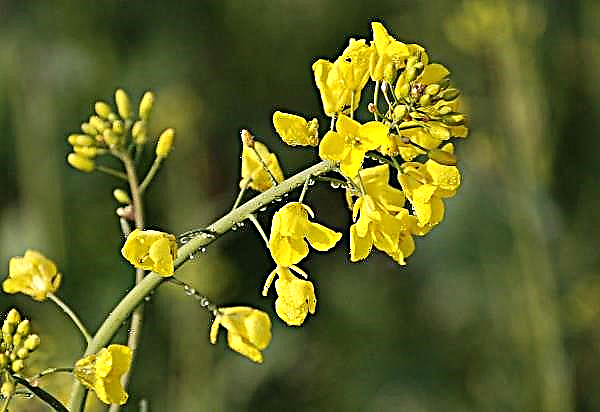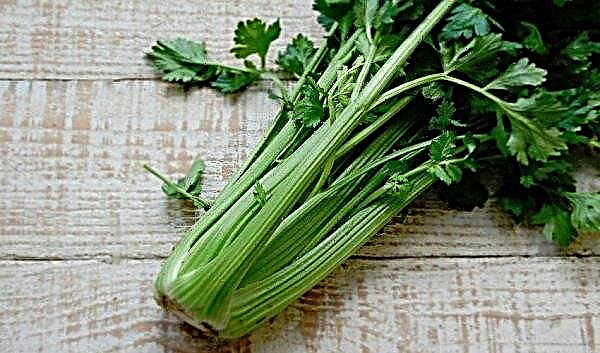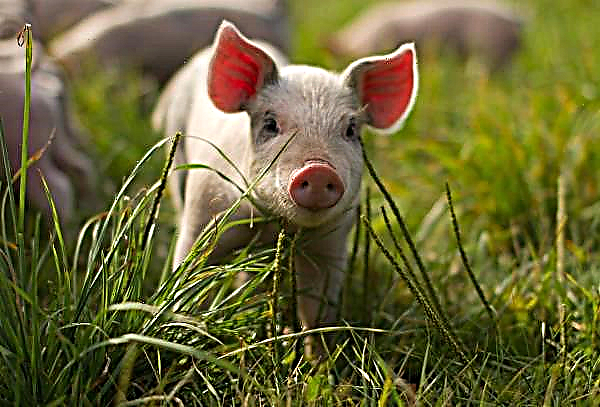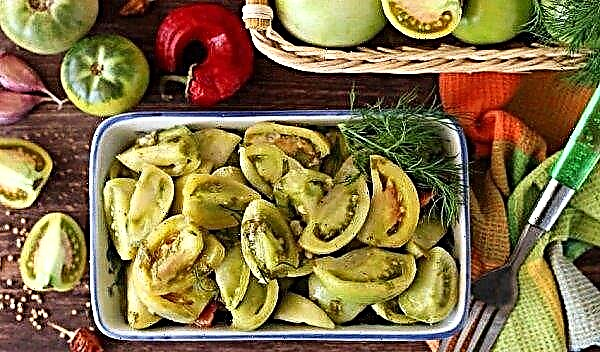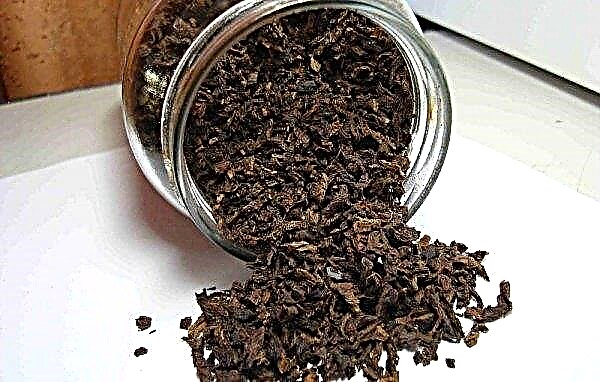A bouquet of flowers is not only a universal gift for any lady, but also a great way to dilute the ordinary atmosphere, or just add bright colors to the interior. Spring flowers are relevant all year round, but are especially appropriate during the onset of cold weather. Tulips are the most popular spring flowers. Because of their extraordinary beauty, gardeners ask themselves questions: what types and characteristics of a flower, how to grow tulips at home or in the country. Variety Columbus (Columbus) is suitable for both bouquets and site design. The cultivation of varieties will be discussed in the article.
Botanical grade description
Columbus is different from other tulips in its unusual shape and color. The shade of the flower resembles a ripe cherry, saturated red petals are circled by a cream-colored terry edging. The buds are voluminous, in diameter can reach 10 cm. The flowering time falls in mid-April, and the process itself lasts at least two weeks. The height of the plant does not exceed 40 cm.
The variety is relatively unpretentious. The plant needs good soil drainage, for which you can use sand or sandy loam. Bulbs should be stored in a dry, dark place. For this, gardeners prematurely dig bulbs from the ground. The place for planting bulbs should change regularly.
Did you know? Tulips used to be considered the most expensive flowers. Their value was 10 times higher than the salary of workers in the Netherlands.
If the plant has been in one place for more than 4 years, the soil is depleted, and the tulip has more risks of getting sick. Spring is planted when the soil warms up to + 10 ° C and above.
Growing Features
Tulip bulbs are picked from the ground when the leaves turn yellow washed with cold water and left to dry for several days in a dry and cool place, then stored in cool rooms. The landing site should be moderately shaded and protected from the wind. It is prepared in the fall, for this humus and wood ash are introduced into the soil.

It is advisable to include superphosphate for fertilizers. Planting material is planted in holes up to 20 cm deep, at an optimal distance from each other — 10 cm.Advantageously, the formation of the plant is influenced by the proximity to primrose, phlox and other stunted flowers.
Important! To protect the plant from diseases, it is recommended to soak the bulbs after washing for half an hour in fungicide.
Landing rules
So that the bulbs have time to take up and adapt to a new habitat, they are planted in the ground in September.
Depending on the size of the bulbs, the depth of planting is accepted:
- for small ones - 7 cm;
- for large - 15 cm;
- medium size - 10 cm.
 Wells are made at a distance of 15 cm from each other in a row. Each well needs to be watered. When planting is complete, it is important to mulch the soil with peat.
Wells are made at a distance of 15 cm from each other in a row. Each well needs to be watered. When planting is complete, it is important to mulch the soil with peat.The subtleties of care
The bulk of tulip care falls in the spring. Care is provided in the form of regular watering. It is necessary to deal with them for the first time when the first sprouts appear. Water for irrigation should be taken clean, not icy, in an amount of 20 liters per 1 m². Later, the same procedure must be carried out during the flowering of buds. To allow the roots to breathe, it is important to loosen the ground between the rows.
Important! So that the bulbs do not risk being burned with fertilizers during top dressing, it is customary to combine the application of fertilizers with watering.
Columbus variety requires additional nutrition. The first of them is carried out using urea, 3 weeks after the sprouting of the sprouts. The solution should not be concentrated, in a proportion of 15 g of urea per 10 liters of water. A glass (200 ml) is poured under each plant.
The second top dressing is performed after the appearance of buds. To do this, use 15 g of superphosphate and potassium sulfate per 10 liters of water. Each flower requires about half a liter of nutrient fluid. The last time they are fertilized with the same components in the flowering season of the buds.
Did you know? The name "tulip" is associated with the Ottoman-Persian word "tulbend" - the name of the fabric used for headgear - turban. The shape of the bud resembles a canvas tied to a head, and according to one version, the Ottomans decorated their heads with plucked tulips.
Pests and diseases
Despite the fact that the variety is very resistant to pests and diseases, some of them are able to infect the plant. The most common tulip disease is variegation, which can be seen on the flowers. The disease can be recognized by uncharacteristic white and dark spots, green stripes on the petals.
To protect tulips from diseases and pests, you must follow the rules:
- Disinfect tools that are used to cut flowers.
- A diseased flower should be dug up as soon as possible, and this place should be treated with a fungicide.
- Planting material is better to buy in trusted nurseries and stores. Unscrupulous sellers may sell bulbs that are infected and not treatable.
- Fungicide can fight the fungus on the plant. It is introduced into the soil during irrigation.

Use in landscape design
Columbus is used both in single and in group compositions. Its rich shade gives real luxury not only to private garden plots, but also to urban flower beds. The variety fits perfectly into leaf compositions. Often it can be found in the role of edging alleys and borders.
Columbus looks great in compositions with other varieties of tulips. Often in the center of a big city you can find a motley flower bed of different types of tulips. When planting bulbs, it is important to consider the color scheme in which the design will be executed. Colors can be chosen based on your own preferences, and create even the most daring compositions.
Tulip is suitable for different landscaping compositions. Its beauty and spring aroma attracts all passers-by. Columbus in a bouquet looks great. Such a bouquet will create a bright and positive atmosphere in the house.

